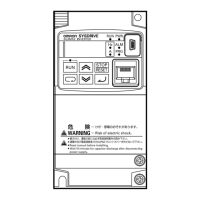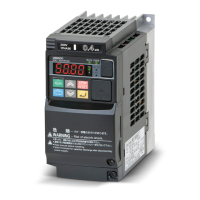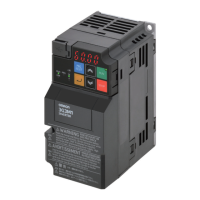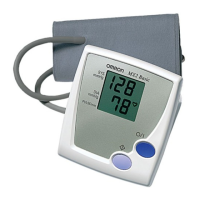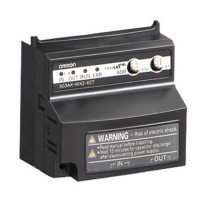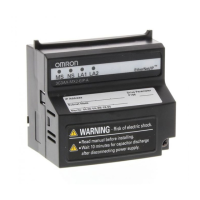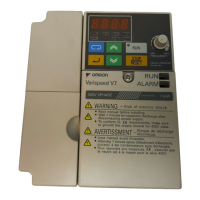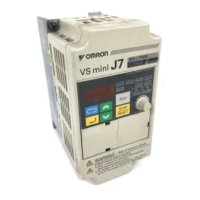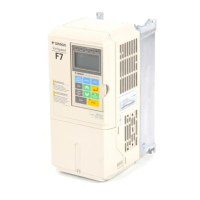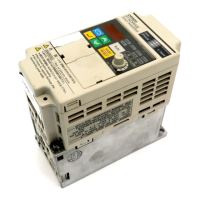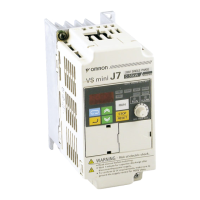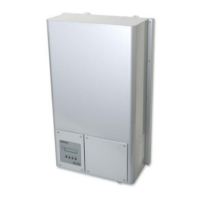(4)
After the brake confirmation signal turns ON (after releasing the brake), the inverter
waits until the Acceleration Wait Time on Brake Control (b122) elapses and acceler-
ates again to the set frequency.
⚫
During deceleration
(5)
After the RUN command turns OFF, the inverter decelerates to the Brake Force Fre-
quency (b127) and turns OFF the brake release signal (C021, C022, C026 = 19: BRK).
(6)
After turning OFF the brake release signal, the inverter waits for the brake confirma-
tion signal (C001 to C007 = 44: BOK) to turn OFF during the time set in the Brake
Error Detection Time (b124).
If the brake confirmation signal does not turn OFF within the time set in b124, the inverter
outputs the brake error signal (C021, C022, C026 = 20: BER) and detects the E36.
(Brake error).
If any of the Multi-function Input 1 to 7 Selection (C001 to C007) is set to 44 (BOK: Brake
confirmation), the Brake Error Detection Time (b124) setting is disabled and the inverter
proceeds to step (7) after the brake release signal turns OFF.
(7)
After the brake confirmation signal turns OFF (after applying the brake), the inverter
waits until the Stop Wait Time on Brake Control (b123) elapses and decelerates again
to an output frequency of 0 Hz.
6-6-2 Brake Control Function Settings
To enable the brake control function, set the Brake Control Function Selection (b120) to 02
(Enabled: DC Injection Braking disabled during stop).
If the interlock function with simple position control and brake control is used, the setting “01:
Enabled (DC Injection Braking enabled during stop)” is enabled. The DC injection braking is dis-
abled only with brake control. For details, refer to 6-7-9 Interlock Function with Simple Position Con-
trol and Brake Control on page 6-50.
The brake control function can be used independently of the 1st/2nd Control Method (A044/A244)
Selection.
You can combine this function with the simple position control function.
For how to combine this function with simple position control, refer to 6-7-9 Interlock Function with
Simple Position Control and Brake Control on page 6-50.
•
Allocate one of the Multi-function Output 11/12 Selection (C021/C022), or Multi-function Relay
Output (AL1, AL2) Function Selection (C026), to the following output signals.
Brake control output : 19 (BRK: Brake release)
Brake error output : 20 (BER: Brake error)
•
As required, set one of the Multi-function Input 1 to 7 Selection (C001 to C007) to 44 (BOK:
Brake confirmation).
•
According to your system, set the parameters used for the operation sequence.
•
It is recommended to use sensorless vector control (A044 = 03) that generates a high torque
during startup. For details on sensorless vector control, refer to 6-1 Sensorless Vector Control on
page 6-3.
•
Set a frequency higher than the Brake Release Frequency (b125). If the set frequency is equal to or
lower than the b125 value, the inverter will detect an overload because the brake cannot be released.
